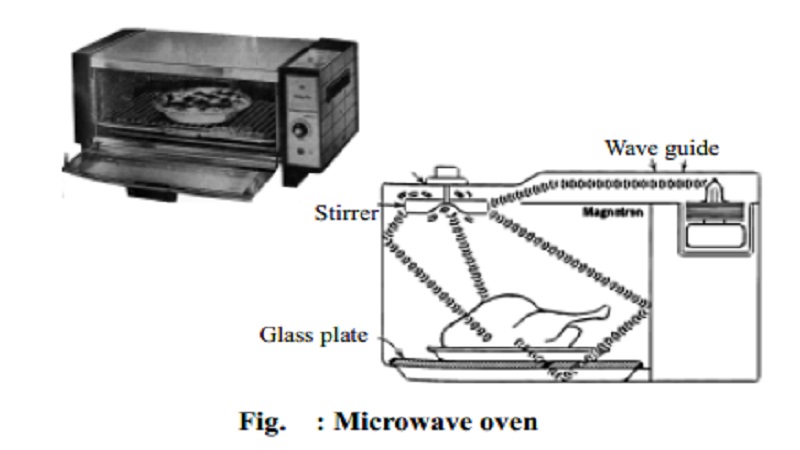Chapter: 11th 12th std standard Home Science Maintain Basic Knowledge for family life Higher secondary school College
Microwave Oven

MICROWAVE OVEN
It is an Electronic oven designed for cooking most foods usually cooked
in gas and electric range including foods commonly cooked on surface units. It
is also used to thaw frozen foods, to heat leftovers, to warm the baby's
bottle.
Microwaves
themselves are the sources of energy and not the heat. Microwave cooking
appliances heat only by radiation. In electronic ranges the microwaves
penetrate the food, setting the food molecule in motion, an action that
generates heat within the food and brings about the cooking results. The
process is very rapid, two to ten times faster than the conventional methods
depending upon the amount of food. In the conventional methods of cookery, heat
is applied to the outside of the food. Pyrex glass and ceramic cookware
(Corning ware) are used as dish materials.
Advantages
The cooking process is very rapid.
Disadvantage
1.
Electricity is expensive.
2.
Not suitable for quantity cookery.
FUELS AND OVENS
The more economical, convenient, clean and
attractive the kitchen, the greater is the satisfaction it gives to the
housewife. Wise selection of fuels and ovens help to conserve time and energy
of the homemaker and induce economy in family finance.
Combustible substances used for the production
of heat are known as fuels. They can be graded according to the amount of heat
produced. No home or industry can exist without them. All fuels contain the
basic combustible elements carbon and hydrogen along with non- combustible
materials such as carbon-di-oxide and moisture.
Qualities of a Good
Fuel
A good fuel should be
1.
Exothermic
2.
Inexpensive
3.
Easily storable and transportable
The
products of combustion should be easily disposable.
TYPES OF FUELS
Fuels fall
under three major categories solid, liquid and gaseous in their natural or
prepared state. Fourth category is electricity and micro wave and fifth
category includes solar energy.
Solid fuels : Natural : Wood,
Coal
Prepared : Charcoal
Liquid fuels : Natural : Petroleum
Prepared : Kerosene
Gaseous fuels : Natural : Natural
gas
Prepared : Coal
gas, Acetylene,Biogas, Methane gas
Electricity and Microwave Solar energy.
Related Topics